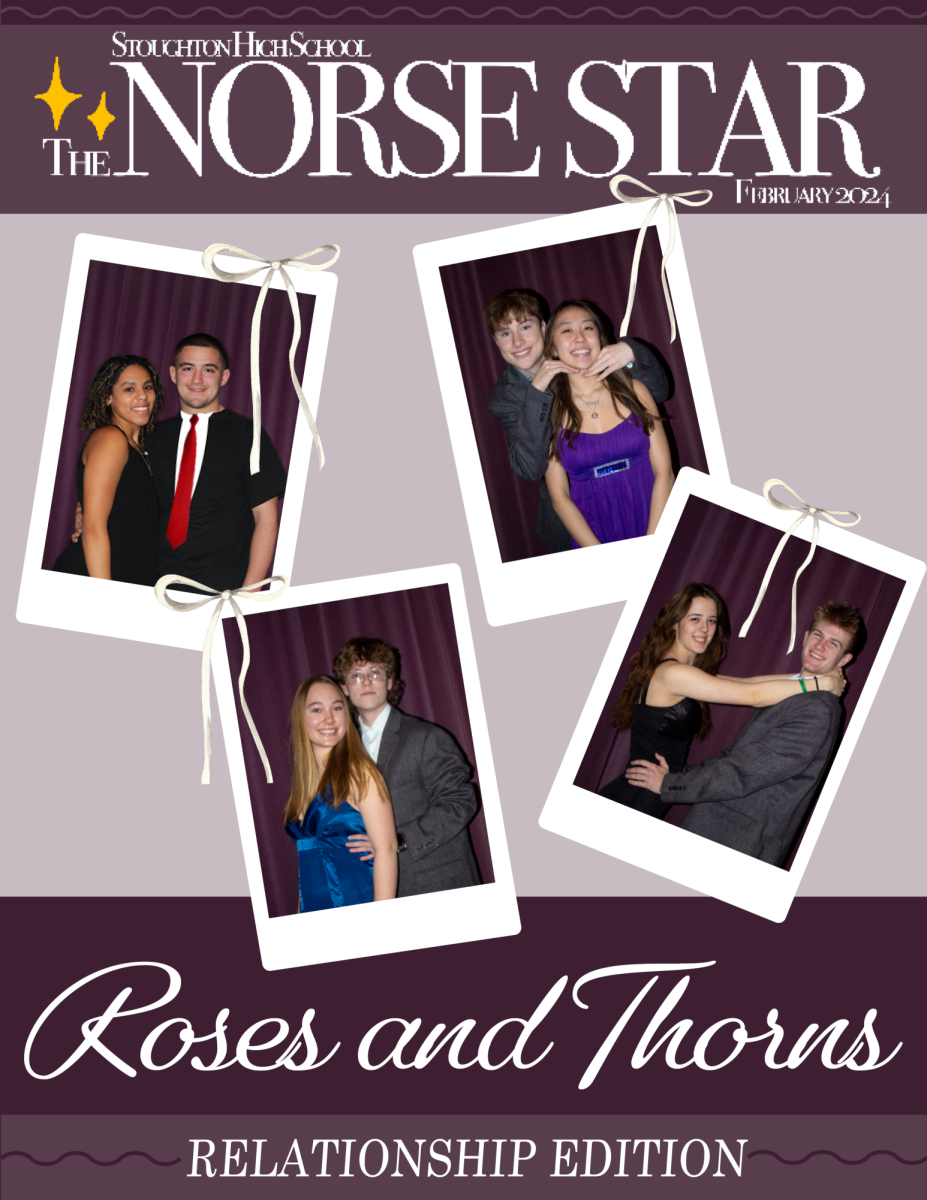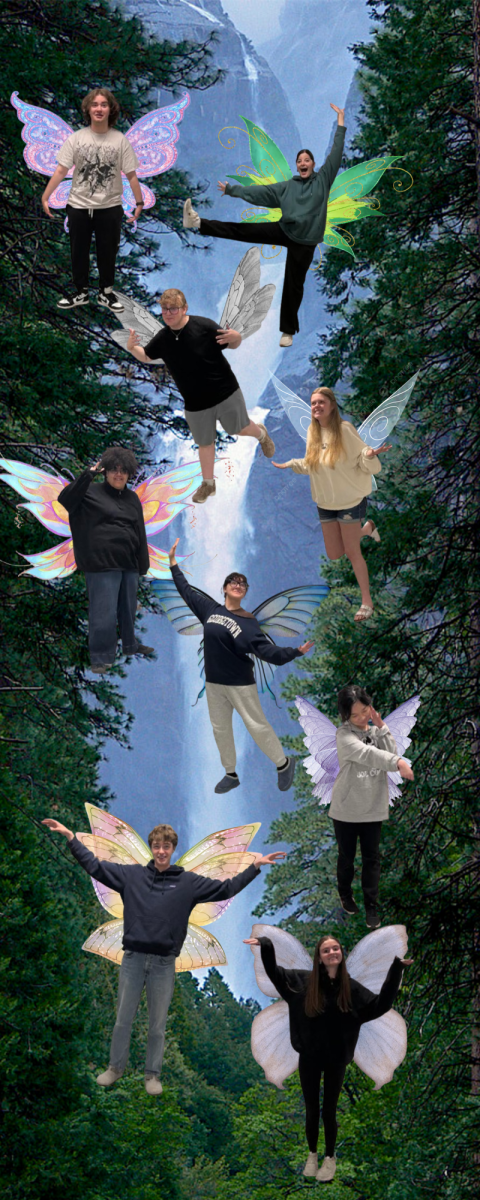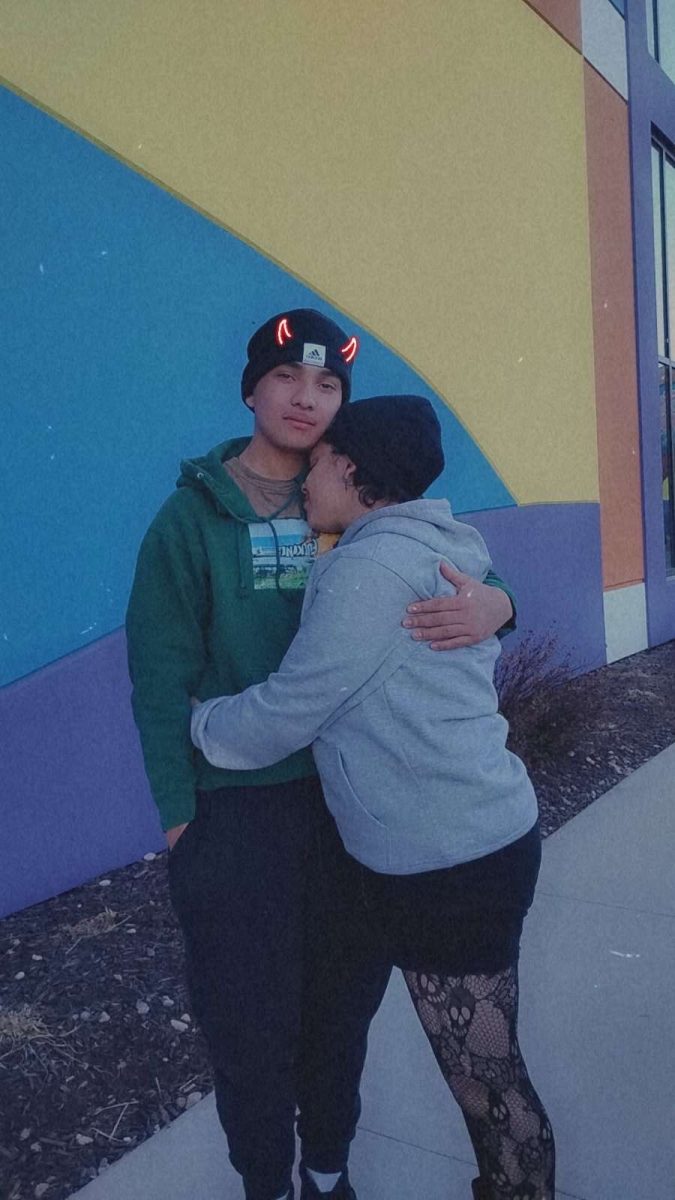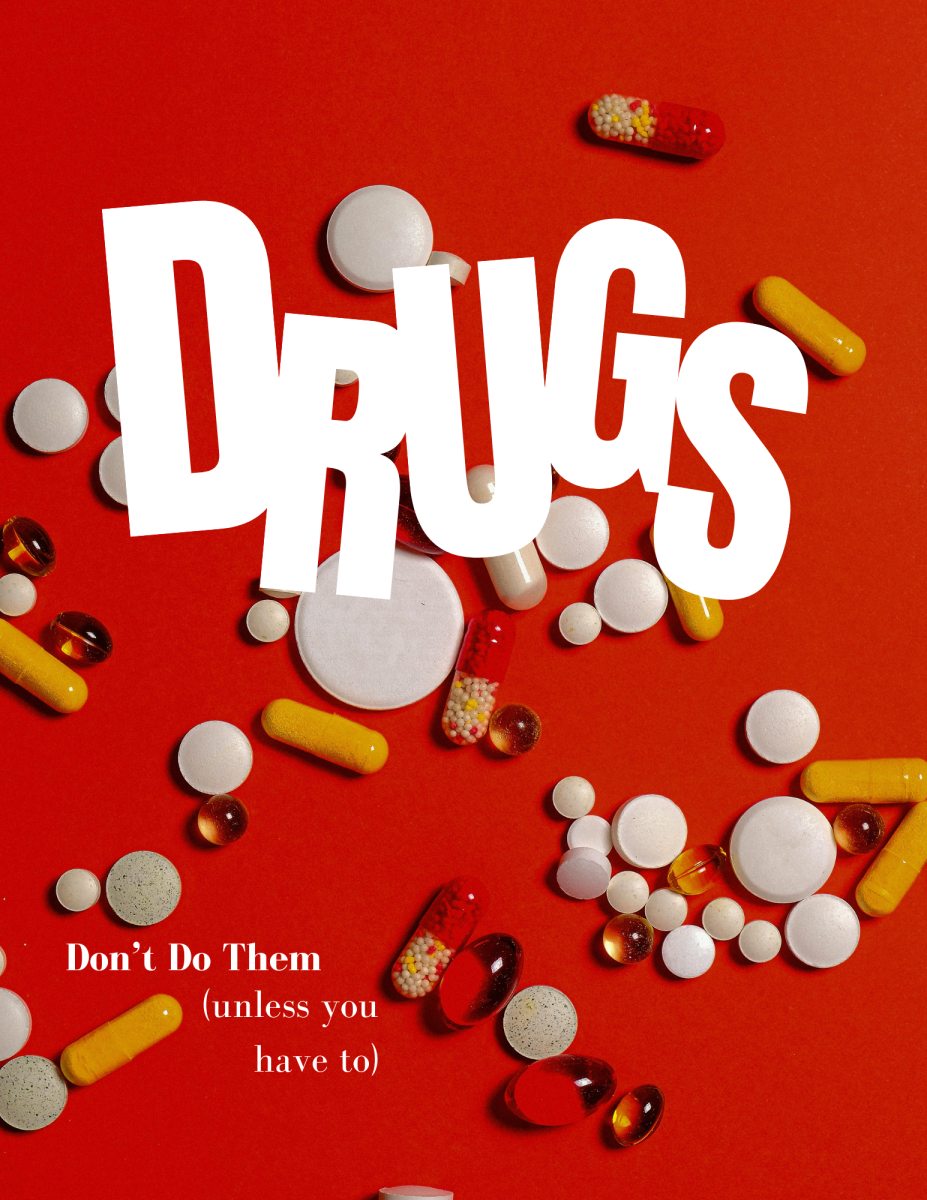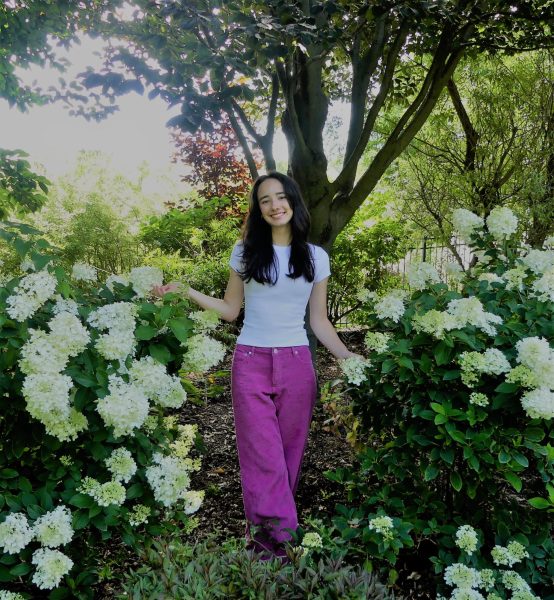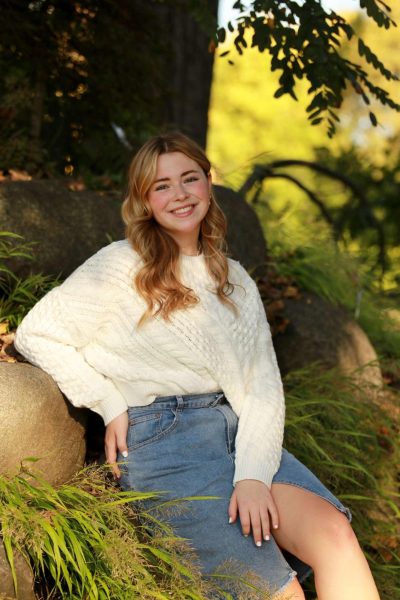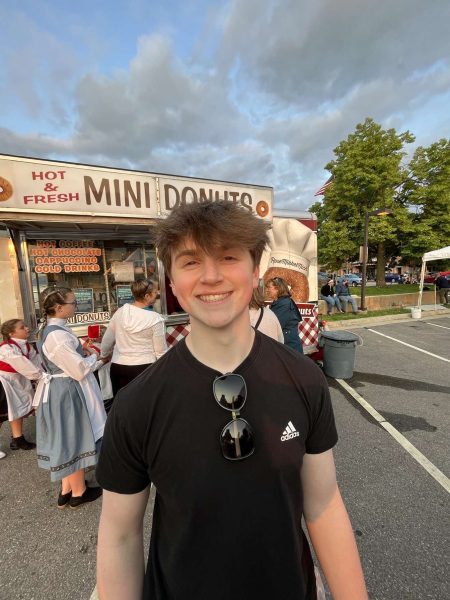We’ve proven the effects of a relationship on humans scientifically, but we’ve been observing social, romantic, familial, and platonic relationships since the beginning of time. It doesn’t take a genius to prove relationships’ lasting positive effects on the brain. In fact, according to Northwestern Medicine, “As humans, the relationships we form with other people are vital to our mental and emotional well-being and even our survival.”
So, what does this mean? Read our February Cover Story to understand habitual ways humans show their love, know the benefits of having a bestie, and be introduced to Stoughton High School’s own couples!
Love is in the air! Since the turn of the 20th century, high schools have been a common place for people to begin their modern dating lives. This trend hasn’t changed, as Stoughton High School houses young couples through all grades, who express their love differently.
Megan Gille and Elijah Hartberg are a senior couple that have been dating for just over two years. They find they enjoy each other’s company, especially outside.
“We like to go to my lake house, that’s my favorite.” Hartberg said. “We like to take our dogs on [walks],” Gille added, to which Hartberg agreed.
In light of that, there are many things that this couple does to make each other feel important and loved, which is mostly through supporting the other person while they’re doing activities they love.
“Being there for each other [is important to me]; if either of us has something going on, whether it’s big or whether it’s small, I think we’re very good at supporting each other and pretty much everything we do,” Gille said.
Hartberg agrees with Gille, and hopes that she feels important as an effect of all of his actions towards her.
“Supporting [Megan] in gymnastics is the main way [I show her she’s important to me] because she loves doing that and whatever she loves is something that I want to support.” Hartberg said.
Using love languages, or methods of showing affection and love towards a romantic partner, are commonly used by couples to ensure that their partner is comfortable with the love they are offering. The Five Love Languages, initially introduced into society by Dr. Gary Chapman, are Physical Touch, Gift Giving, Quality Time, Words of Affirmation, and Acts of Service. It’s quite common for a person to have a main love language, or their “top choice,” but this doesn’t mean it’s the only way they give and receive love. In fact, many people have different mixings of languages, with some having a mix of all five.
In many instances, there are two separate categories with two separate mixes of the languages: one for giving, and one for receiving. It is very common for the mixes of these two to be different for an individual.
Hartberg and Gille’s shared love language, quality time, plays a big part in their relationship.
“At first, it was very hard for me to not stay on my routine schedule of going to practice then going home and doing my homework. [Elijah’s] always very much like, ‘Well, I’ll help you with your homework so we can at least hang out.’ So, it doesn’t really matter what we’re doing, as long as we get to be together. Then we make the most of it,” Gille said.
There are many other aspects of Hartberg’s and Gille’s relationship that they feel are different from most. For them, their communication and religion are the source of their connection.
“I feel like [Elijah’s] always the first person that I go to, to talk to. He always, whether it’s what I want to hear or not, has the right answer for most things. I just feel like that’s one thing that we started off really good with in our relationship was communicating over everything,” Gille said.
“I think it’s cool that automatically when we first started dating, we already had similarity in our belief and our values. Being able to go to Bible study every Friday morning and reading the Bible together when we’re hanging out [is something I think] is really cool,” Hartberg added.
In full, both Gille and Hartberg feel as though they are a part of a healthy relationship. They both claim their partner makes them feel significant in their lives, and they have mechanisms they use to ensure they stay in a place in which both of them are happy.
“I feel like every single day we’ve been dating, we’ve been happy at the end of the day. […] No matter if we had a disagreement in the day, it was totally fine, [because] we make sure that it’s fine at the end of the day, so that’s all that matters,” Harberg said.
Junior Kaeson Salonek and Senior Alexis Hellwig are another couple at SHS, and they’ve been dating for over a year. They enjoy being active together, like working out, hiking, and swimming. They also enjoy watching movies.
Salonek and Hellwig agree with Gille and Hartberg that they show each other they’re important the most through supporting their partners in their sports and activities.
“Kaeson does football and wrestling, and he used to do basketball. So I go to those events. Just being there all day, I’m supporting him through that,” Hellwig said.
This couple’s relationship is self-described as “50-50,” meaning that they can find a healthy balance between their time, giving themselves an equitable amount of personal/family time, and time within themselves. Both of their love languages are quality time, so finding that time to spend with one another is an important part of their relationship.
“We’re pretty 50-50 when it comes to family events and sporting events, as well as making sure that we’re spending equal amounts of time with whatever our personal preference is, and obviously things that we enjoy doing together,” Salonek said.
Salonek and Hellwig both have strong opinions on how relationships are portrayed in media, especially in TV shows and movies. Many reality shows twist the idea of romance and dating into an overly lustful drama-fest, which isn’t realistic for real relationships. Couples often fight, cheat, and make out, but at extreme levels.
“I feel like a lot of televisions shows relationships as being perfect, or there’s a tiny little incident and they’re perfect again,” Hellwig said. “I think that’s perceived wrong because I think that [Kaeson and I] have hard things that happen in our relationship, but it takes time, and you have to work for it. It’s not always supposed to be easy.”
Hellwig and Salonek both describe their relationship as a healthy one, and they think that communication is one of the most important parts of their connection.
“[The key is] making sure our delivery isn’t hurting the other person or putting them down, and making sure it’s structured and targeted to benefit both of us, not just one of us,” Salonek said.
Although romantic same-sex relationships have been recorded in history dating back to ancient civilizations, the modern movement for LGBTQ+ rights began in 1970 to commemorate the Stonewall Rebellion with a protest. The Stonewall Rebellion, also called the Stonewall Riots, was a series of protests against the immoral attacks on the Stonewall gay bar in New York City by area police officers. Though this initially sparked the movement, the movement called “Pride” didn’t officially begin until a year later.
Today, the movement still blazes on. Though LGBTQ marriage is legal in all 50 states, many bills have been thrown into circulation in an attempt to reverse that right, most commonly by states in the Midwest and Southeast.
There are many LGBTQ couples at SHS, including juniors Chelsea Hardin and Sable Tyrrell. Hardin and Tyrell have been dating since Aug. 31, 2020, one day before their first day of eighth grade.
The couple enjoys watching movies and playing video games, but they also enjoy just talking about anything that happens in their day, big or small.
“Usually, we’ll just talk to each other about whatever random nonsense we’ve been thinking about lately. Otherwise, it’s mostly just a lot of multiplayer video games we both can have a laugh while playing,” Hardin said through an email.
Hardin and Tyrrell also have opinions about media-exclusive television relationships, but they see these differently. For instance, Hardin finds some aspects of these relationships “overly romanticized,” especially the cliched “love at first sight.”
“Any healthy relationships I see in TV almost always end with the main character’s significant other dying and being the reason for the others’ vengeance plot-kickstarter, and I’m praying I never have to see that in our relationship,” Hardin said.
Tyrrell, on the other hand, sees similarities.
“I am absolutely horrible with picking up random hints […], picture the stereotype of the clueless boyfriend, and I 100% relate sometimes,” Tyrrell said through an email.
The couple has found that SHS and Stoughton as a whole have been overall very welcoming to their relationship, with no real issues.
“Stoughton is a great school for making people feel included, and I’ve gotten very few off-the-rail comments. If people think anything, I don’t see, they do a great job at hiding it,” Hardin said.
Think of your very best friend, or group of friends. They are the people that make you laugh and who you look to for support. They should make you feel safe and respected. Maybe they go to another school or are in a different grade, but your relationship with them impacts you every day. High school friendships have surprising positive and negative effects on social development that all young adults should know as they go through high school.
High school is a time of transformation. It is where small, awkward middle schoolers grow into young adults, and begin to discover who they are and form what their futures will be. While these four years at SHS may not be everyone’s favorite time, there is no denying that our high school experiences cumulate upon each other, and ultimately shape how our lives will play out.
Growing up is all about independence, and with this comes surrounding yourself with the people you choose. For the first time in our lives, for better or for worse, friendships are no longer dictated by playdates and watchful parents. Getting your driver’s license means seeing friends whenever and wherever you like. Social media and unmonitored phone usage leads to 24/7 communication with your peers in Wisconsin and worldwide.
Most high school students report feeling more understood and accepted by their friends than by the adults in their lives. This shouldn’t be a shock, seeing as friendships are often based on shared activities and interests, rather than shared DNA.
You are more likely to be friends with someone who shares the same beliefs, is in the same activities, and has had similar life experiences. According to a study published in the National Library of Medicine, “Adolescents make friends with those whose characteristics mirror their own. Adolescents choose friends from similar racial/ethnic backgrounds, who are the same gender, and who behave in similar ways” (Academic Achievement and Its Impact on Friend Dynamics).
Of course, having a diverse group of friends that allows for individuality and challenges your preexisting beliefs is essential to being a well-rounded person. However, studies from the US Department of Health & Human Services suggest that young adults typically curate these groups of people post-high school, or throughout college.
High school friendships directly affect our positive social skills, such as cooperation, communication, and conflict resolution, all while helping young adults grow their self-image. But the effects of platonic relationships do not end here.
Interestingly, there is a heavily studied connection between adolescent friendships and academic achievement.
Friends can actively encourage or discourage academic effort. Results from several studies have shown that in a majority of average American high schools, similarity in academic achievement is a consistent predictor of friendship ties. This means that the typical high-achieving student will be more likely to extend friendships to another high-achieving student, and vice versa. Students who care less about grades, or low-achieving students, on average, are more likely to have friendships with other low-achieving peers.
This goes back to how high school students choose their friends in the first place. It is all about shared values, attitudes, and goals.
Friendships play an important role in our day-to-day lives, the here and the now. But, they also impact our future. Our education can determine where we go in life, and what we can or can’t accomplish. And our friends play an essential role in the educational process.
Furthermore, our friends provide support, and can both encourage or discourage academic achievement. Gravitating toward high or low-achieving friends is an indicator of how young adults will spend their time.
“If high-achieving students make high-achieving friends, their achievement is reinforced and maintained by their friendships,” (Academic Achievement and Its Impact on Friend Dynamics).
With all this being said, your friends are not the deciding factor in how you will turn out as a person. You are the only thing that controls how you act and what you achieve. But it is important to remember that the people you surround yourself with can influence you in unknown ways.
Remember that as we grow up, attend college, and enter the workforce, we spend less and less time with our families, and more time with our peers. The relationships we build with these people may soon become some of our most important, and they will change the person you grow to be. The friendships we make as young adults set the stage for our future romantic, platonic, and familial relationships.
By choosing these friends wisely, you will continue to grow and change positively. High school is better with friends. Find your people, the ones who push you to achieve, make you feel respected, and care about your well-being. Years from now, their actions and influences will stay with you, even if they have not.
While friends make a deep impression on our personalities as we move through our childhoods, it was our families who nurtured us as we grew and matured, from babies to children to young adults. For children, parents and caregivers are the most important people in their lives. These family members are the ones responsible for protecting, encouraging, and guiding them, and they play a crucial role in how high schoolers develop socially, cognitively, and emotionally.
“Nature v.s. Nurture” is a debate that has existed for thousands of years, since the time of the Ancient Greeks. It is the argument over whether our inherited genetic attributes or the environment we were raised in, plays a larger role in personality. Modern psychologists have agreed that both play a part in developing our identities, but for the sake of this article, we will focus on “Nurture.”
All the actions our parents take regarding our upbringing compounds upon themselves. Infants whose needs are met quickly, such as changing, feeding, soothing, etc., form an attachment to their caregivers. This attachment gives children a sense of safety and builds the groundwork for further social, emotional, and cognitive development.
Beyond infancy, parents who have communicative, open relationships with their children, with appropriate boundaries, are more likely to raise children with high self-esteem, self-image, and high academic achievement. Research has also shown that these children are at less of a risk of depression, anxiety, or substance abuse.
Kelly Tway teaches Health Education at SHS and River Bluff Middle School. From her time teaching Health to 7th, 9th, and 10th graders, Tway has seen and heard first-hand experiences about how family relationships truly impact growing young adults.
“Unfortunately, we do pull in a lot of statistics about how, depending on people’s family situations, that can increase their chances for different things in the health world, whether that be drug use, or mental health. In regards to abuse, unfortunately, there is a chance that these cycles can continue [based on family circumstances],” Tway said.
A child’s well-being can be influenced by various factors, i.e., “Nature,” but the parent-child relationship is undoubtedly the most significant aspect.
“There are topics that are pulled into Health Class that we often bring back to family,” Tway said. “When we begin the semester we talk about values and a lot about who you are. We do talk about heredity, you know nature versus nurture, but we try to understand and reflect about how that impacts you […] From our families a lot of people learn what not to do. There is a very big impact of how somebody is raised and how that can change them.”
Family should be a support system, and if we can reap the benefits of having supportive people in our corner, there is no telling what we can accomplish and achieve. Familial relationships are equally important to romantic and platonic relationships and deserve equal care. They are the ones we experience first when we are especially vulnerable and need nurturing. Their effect on high schoolers cannot be overlooked as we grow and develop.
Relationships are all around us! We hope you’ve enjoyed learning about the couples of SHS and how they make one another feel special. We at the Norse Star also hope you learned more about your relationships! As teenagers, we spend most of our time with our friends, high school boyfriends and girlfriends, and our families. But as we age, we spend more and more time on our own. The time we spend with our parents and siblings peaks in childhood, and steadily declines after the age of 20. Time with our families is limited—prioritize every moment. The amount of time we spend with friends peaks at 18, but declines after our 20s. Look for friendships that add depth to your life, and cherish the time you spent with these people. As for time spent with your partner, the amount trends upwards, until death. Who you choose as a life partner is quite possibly one of the most important decisions you will make. Never settle for anything less than love. But perhaps most important of all is the relationship you have with yourself. Time spent alone increases over our lives, so find the joy and happiness in the time you have to yourself!


